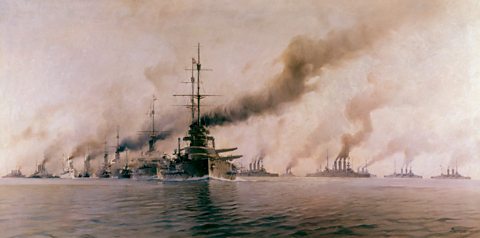Scots volunteers in World War One
When Britain declared war on Germany on August 4th 1914, tens of thousands of Scottish men quickly volunteered to join the British Army.
In this article we'll look at why so many Scots volunteered to join the army at the outbreak of war.
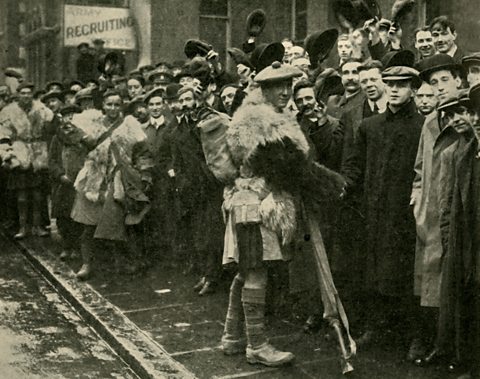
Kitchener's World War One recruitment campaign
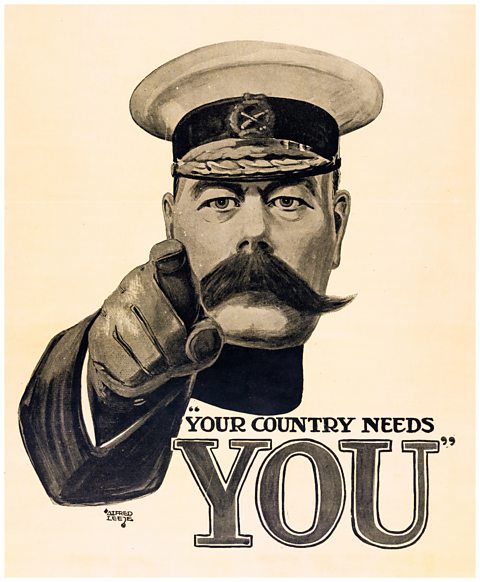
When war was declared in 1914, a wave of excitement and anticipation spread across all of Europe.
In Britain, the Minister for War, Lord Kitchener quickly realised that if Britain were to win the war, it would need more men to serve in the army. He embarked on a mass campaign to encourage men between the ages of 18-41 to вҖҳdo their bit for King and CountryвҖҷ.
Arguably, KitchenerвҖҷs campaign was most successful in Scotland. Only two days after the declaration of war, 6,000 men had signed up to fight in Glasgow.
By the end of 1914, 24% of the entire workforce in the west of Scotland had joined the British Army.

Why did Scots volunteer to fight in WW1?
There are several reasons why so many Scots signed up to join the army to fight in World War One.
Did unemployment and poverty boost World War One recruitment?
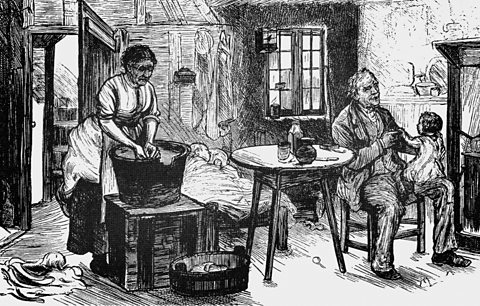
At the turn of the 20th century, as a result of the social surveys carried out by the social reformers, Charles Booth and Seebohm Rowntree, it was estimated that a third of the British population lived in poverty.
Some Scottish men saw joining the army as a chance to escape poverty вҖ“ it provided them with food and the opportunity to support their families financially.
Before the war, many Scottish industries had experienced a boom. Coal mining, steel work and shipbuilding had attracted more and more workers. By 1914 some of these industries had already begun to shrink. Some workers had been laid off. Others were forced to work part time.
War brought uncertainty to businesses. Exports to parts of Europe ended. New orders and contracts dried up. Industries began cutting jobs. Nearly 500,000 men were made redundant by the end of August,
As soon as the war began Carron Company in Larbert closed its mines as they depended on selling their coal abroad. Others had experienced the threat of job losses looming over them for some time.
For example, 36% of miners in the Lothian coalfields enlisted as the industry had already begun to collapse.
With little or no income, men working in Scottish industry saw enlistment as a way to support their families.
In the first three months of the war, 109,714 recruits joined from Scotland's main industries of coal mining, engineering, shipbuilding, iron and steel, and building. Later on, as the government began placing orders with industry, employment increased and the number of volunteers reduced.
Fewer enlisted from rural areas where the workforce did not face the same risk of unemployment. Men working in shops and offices also signed up in smaller numbers. Volunteers from these jobs increased later on. Some were offered incentives for signing up -Scots in the Highlands were promised that in return for their service, they would be awarded their own plot of land upon their return вҖ“ many were tenant farmers and the opportunity to own land was too good to pass up. Others felt increasing social pressure to do their bit.

The Scottish martial tradition
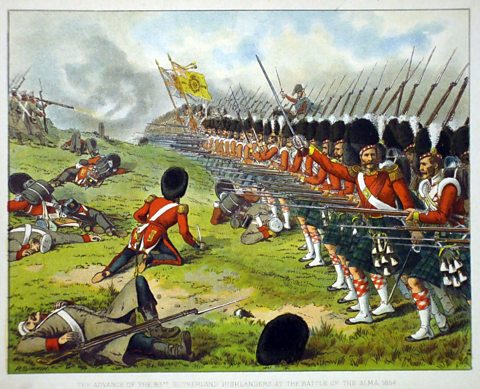
Even before the outbreak of the war, Scotland had a proud military tradition: this was known as the Scottish martial tradition.
In rural Scotland there was a tradition of part-time military service. It was part of normal life to sign up for volunteer associations and then the Territorial Force set up in 1908. There were meeting places and drill halls for Territorial Forces across Scotland. Many were small bases for local companies of men, so there was a strong sense of pride in joining up and representing the local community.
There was a patriotic sentiment in Scotland to fight for the King and Empire вҖ“ Scottish regiments such as the Gordon Highlanders, the Royal Scots, the Highland Light Infantry and the King's Own Scottish Borderers had built up a reputation of being amongst the bravest and most loyal troops during their service throughout the Empire.
This legacy encouraged a new generation of Scots to join the army so they could вҖңfight and protectвҖқ their country.
Kitchener even directed a personal appeal to Scots:
вҖҳI feel certain that Scotsmen have only to know that the country urgently needs their services to offer them with the same splendid patriotism as they have always shown in the past.вҖҷ
This further encouraging the sense of patriotism Scots had to protect their King and Empire.

Propaganda in WW1

PropagandaThe deliberate spreading of information which may be untrue or only one side of the story. posters played a huge role in encouraging men across the whole of Britain to sign up to the army.
However, the War Office published posters that directly appealed to Scots. The image of the kilt clad Scottish soldier could be seen on many posters, motivating men to sign up.
Other posters displayed Robert BurnsвҖҷ quotes, inspiring the men to fulfil their patriotic duties.
Newspapers carried stories about the number of people queuing to join up. Spreading the idea that everyone else was volunteering encouraged men to do the same.

WW1 and adventure
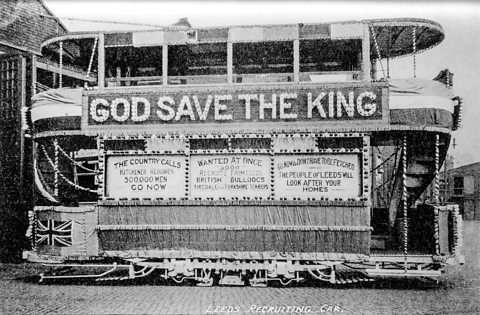
Young Scots from small towns, such as Larbert and the Highlands, saw joining the army as an adventure and an opportunity to travel to countries that were previously out of reach due to financial constraints.
Many people believed the conflict would be a short war. Scottish men who joined the army at the outbreak of the war believed that they would be home by Christmas.
The methods used to sign men up to the army were considered to be modern and exciting.
Cities such as Edinburgh and Glasgow had special tram cars which were decorated with patriotic posters and Union flags which would take men directly to the recruitment stations to sign up.
Town Halls and theatres held concerts and recitals which would feature speeches and appeals to encourage men to join the army.

The Pals Battalions in WW1
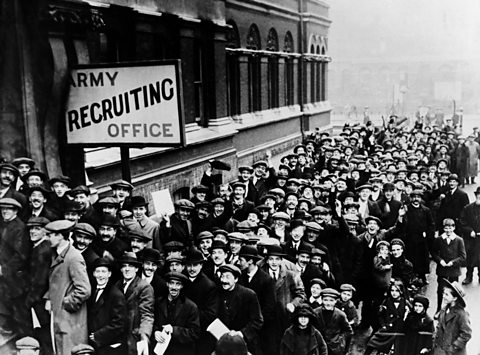
The ability to join the army with friends proved to be an extremely popular method and encouraged many Scots to enlist. In rural areas, many men joined their local company of the Territorial Force.
Although the Pals Battalions were not an official scheme in Scotland, some men in Scottish cities were persuaded to enlist because they were able to fight alongside their friends or colleagues.
After thirteen players from the Heart of Midlothian football team signed up, 600 Hearts supporters in six days also joined the 16th Royal Scots which became known as McCraeвҖҷs Pals Battalion.
In Glasgow similar battalions were formed from members of the Boys Brigade (3rd Glasgow Battalion) and the tram workers (15th Glasgow Battalion) in the city.

Social pressure and World War One recruitment
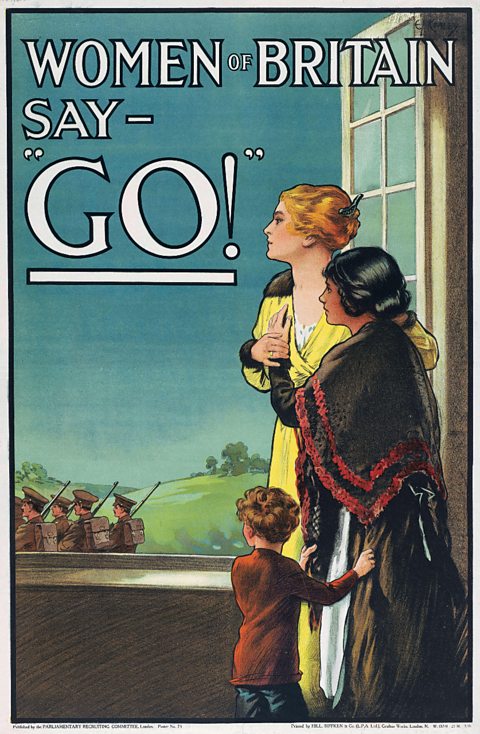
Pressure from peers, family and employers also played a part in convincing Scots to sign up.
The Earl of Wemyss, promised any man who did sign up that they would receive half pay for the duration of the war and that once they returned from the war, they would receive their old jobs back.
However, he also threatened to fire any employee working on his estate between the ages of 18 and 30 who did not volunteer, leaving many with little choice of what to do.
Across the UK, White Feather Societies were set up. Groups of women would hand out white feathers (signs of cowardice) to men who did not sign up. The fear of being singled out drove some men into the recruitment offices.
Local Scottish newspapers, such as Falkirk Herald, frequently reported positive stories about trench life during the war. This gave a false and idyllic impression of the war and encouraged men to sign up.
Within Scotland, the local Sheriff Courts would вҖҳofferвҖҷ some criminals the opportunity to sign up and serve in the Army rather than serve their sentence in a jail.

Summary: World War One recruitment in Scotland
There were a wide assortment of reasons why Scots joined the army and often many would have been motivated by a combination of reasons rather than a single one. As the historian Peter Simkins put it:
The prospect of adventure and the opportunity to escape from poverty, dreary surroundings or a tedious job played their part in drawing men to the recruiting office.вҖ“ "Kitchener's Army: The Raising of the New Armies, 1914-1916", Peter Simkins
Test your knowledge
More on World War One
Find out more by working through a topic
- count4 of 9
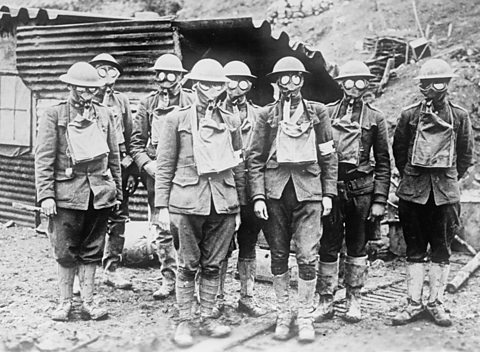
- count5 of 9

- count6 of 9
